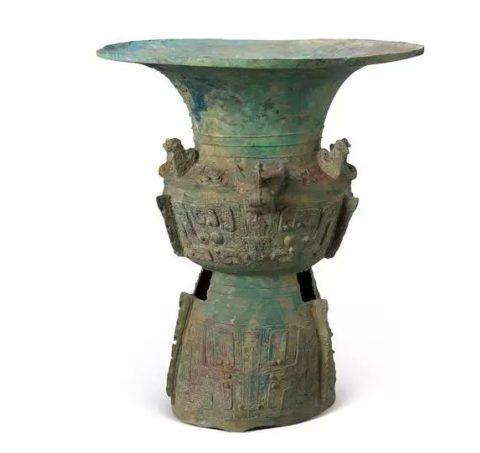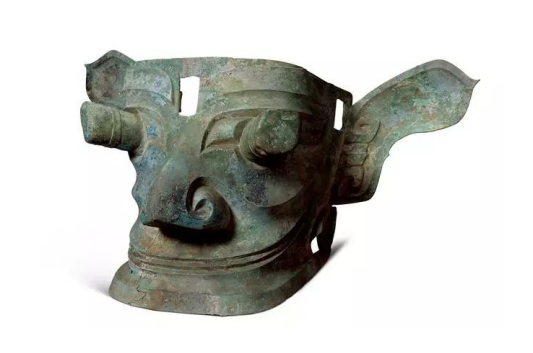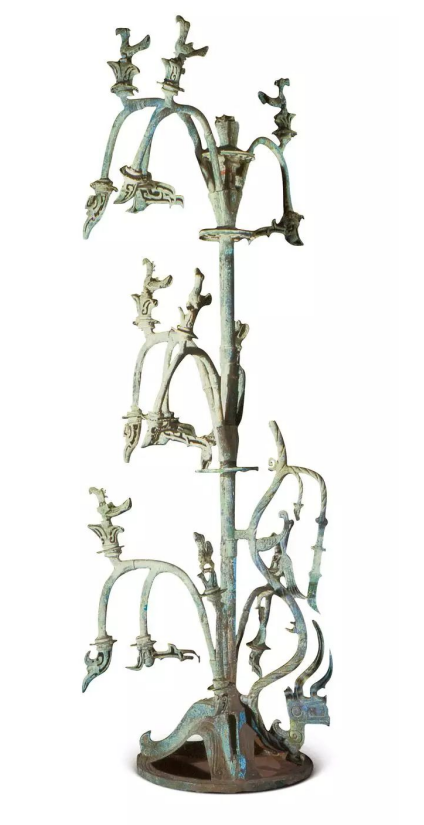Every piece of Chinese antiques and bronzes is exquisitely made and is known as a national treasure.
The name of the Sanxingdui Culture is based on the data obtained from several archaeological investigations and excavations from 1933 to 1980 and 1981. Since the first excavation by Ge Weihan and Lin Mingjun of the Museum of West China University in 1933, scientific archaeological investigation and excavation of the Sanxingdui area were not carried out until 1949.
The Sichuan Provincial Cultural Relics Management Committee and the History Department of Sichuan University conducted archaeological work in this area in 1956, 1958, 1963, 1964 and May 1980. The scope of Zhongxing Commune in Guanghan County).
From November 1980 to May 1981, the Sichuan Provincial Cultural Administration, the Provincial Museum and the Guanghan County Cultural Center conducted excavations in Sanxingdui and obtained rich materials. They found 18 house foundations, 3 ash pits, 4 tombs, and jade tools. More than 110 pieces, more than 70 pieces of pottery and more than 100,000 pieces of pottery. The upper limit of age is 4500±150 years ago, and it lasted roughly 3000 years ago, that is, from the late Neolithic period to the Xia and Shang periods in the Central Plains. According to the fact that the ancient culture of the Sanxingdui site is widely distributed in Sichuan and has a group of special utensils that are different from any other archaeological culture, the excavators suggested that this archaeological culture should be named "Sanxingdui Culture".

The head of a cow with animal face pattern in the late Shang Dynasty is 52.6 cm high and 47 cm in diameter.
The main elements of the Central Plains Shang culture in Sanxingdui culture are ritual vessels, such as zun, 罍 (pronounced: [léi]), bi, and cong. This shows that the Sanxingdui culture mainly accepted the ritual thought of the Central Plains, which is consistent with other cultures at that time being influenced by the radiation of the Central Plains business culture, but the Sanxingdui culture also made its own unique choices and creations.

In the late Shang Dynasty, the four-goat-headed beast-faced scorpion was 54 cm high. Unearthed from the No. 2 sacrificial pit at the Sanxingdui site in Guanghan, Sichuan
According to archaeological discoveries, the bronze ritual vessels of the Sanxingdui Culture are not found in the Central Plains, such as the wine vessels Gu, Jue, Shu (pronounced: [jiǎ]) and the food vessels Ding, Gui, etc. The main ones are the Zun and Ji; at the same time, in the Sanxingdui Culture A large number of bronze statues, masks, altars, and sacred trees with regional characteristics and shamanistic colors that were not found in the Central Plains appeared. These evidences show that the Sanxingdui culture integrated its own local cultural traditions after accepting the ritual thought of the Central Plains.

The late Shang Dynasty Zongmu mask is 66 cm high and 138 cm wide. Unearthed from the No. 2 sacrificial pit at the Sanxingdui site in Guanghan, Sichuan
The artifacts in Sanxingdui are tall, complex in structure, vivid and peculiar. For example, a man mask with vertical eyes (above) unearthed from the No. 2 sacrifice pit is different from the realistic expression of the human face tripod. The eyes are projected vertically, and the ears, nose and mouth are extremely exaggerated and deformed, which may imply that it has extraordinary abilities. Sensory ability, or the image of the legendary ancient Shu king "Silkworm Cong". There are perforations on both sides of the mask. It is speculated that it was originally an idol decoration on a large building, which is a reflection of the gods and witches regime in western Sichuan. In addition, there are bronze figures with golden masks (below), among the nearly 60 portraits, only 4 wear gold masks, which is of great significance.

The head of a man wearing a gold mask in the late Shang Dynasty is 42.5 cm high and 12.5 cm in diameter.

The late Shang Dynasty statue is 260.8 cm high, unearthed from the No. 2 sacrificial pit at the Sanxingdui site in Guanghan, Sichuan, and collected by the Sanxingdui Museum
The bronze standing figure is 172 cm high, the base is 90 cm high, and the overall height is 262 cm. Unearthed in the No. 2 sacrificial pit at the Sanxingdui site in Guanghan, Sichuan in 1986, the whole is composed of two parts, the standing figure and the pedestal. The standing figure wears a lotus-shaped (representing the sun god) animal face pattern and a high crown with a zigzag pattern. The outermost layer is a one-sleeve half-arm raglan with a square-like woven "ribbon" on the top. Both ends of the "ribbon" are looped at the vest, and the accessories on the loops have been removed. There are two sets of identical dragon patterns on the left side of the clothes, each set of two, in the shape of the word "Ha" opposite to each other. The hands are huge, and the palms are round in the shape of a circle. Some scholars speculate that there should be some kind of utensils in their hands, and it is very likely that they are ivory unearthed from the sacrificial pit.
The late Shang Dynasty sacred tree is 396 cm high and the base diameter is 93 cm. Unearthed from the No. 2 sacrificial pit at the Sanxingdui site in Guanghan, Sichuan, collected by the Sanxingdui Museum
There is also a tung tree nearly 4 meters high (above), with 9 branches extending from the main trunk, 3 in a group, each branch has flowers or fruits at the top of the arc, and a bird stands on it, which is very rich feature. The big bird head on display is one of the bird images unique to Sanxingdui culture (below). There are traces of Zhu Zhu around the bird's beak and eyeballs. Birds were closely related to the sun in ancient times. This bird head should be related to the worship of the sun by the ancestors of ancient Shu.

The head of the big bird in the late Shang Dynasty is 40.3 cm high and the horizontal diameter is 19.6 cm. Unearthed from the No. 2 sacrificial pit at the Sanxingdui site in Guanghan, Sichuan
Sanxingdui culture expresses local spiritual beliefs through unique plastic arts techniques. The gigantic and majestic objects represent the main gods. For example, the Zongmu mask mentioned above represents the ancestor gods, and the standing figures may represent the magicians. Trees, birds and other animals and plants may express a primitive nature or totem worship. The local residents of Sanxingdui accepted the bronze casting technology of the Central Plains, made selections and innovations based on their own local beliefs, and completed the "Bronze Dialogue" between the upper reaches of the Yangtze River and the Central Plains.

In the late Shang Dynasty, the top kneeling figure was 15.6 cm high. Unearthed from the No. 2 sacrificial pit at the Sanxingdui site in Guanghan, Sichuan
Copper ore was a scarce resource in the Bronze Age. In addition to the complexity of the casting process, bronze wares became a precious artifact and entered the social level, endowed with special cultural connotations and spiritual beliefs, and became the material carrier for serving the ritual system and regulating the society. The merchants who went south brought their bronze culture to the Yangtze River Basin, and the indigenous culture of the Yangtze River Basin made their own cultural choices for the utensils, casting techniques and ritual ideas in the bronze culture of the Central Plains based on their own cultural traditions and spiritual beliefs. With transformation and innovation, the same bronze materials and utensils convey different beliefs and connotations.









